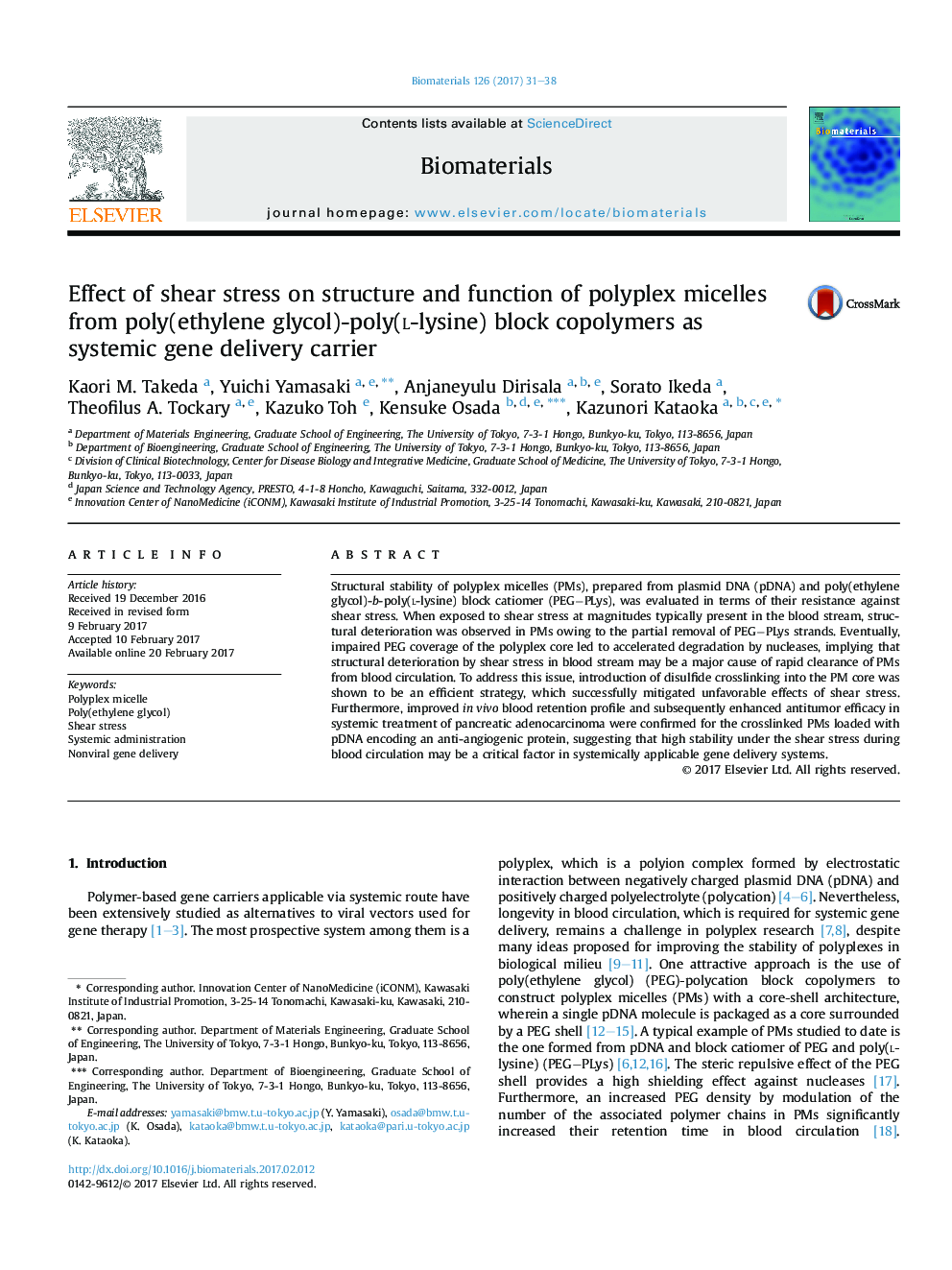| کد مقاله | کد نشریه | سال انتشار | مقاله انگلیسی | نسخه تمام متن |
|---|---|---|---|---|
| 6450755 | 1416141 | 2017 | 8 صفحه PDF | دانلود رایگان |
Structural stability of polyplex micelles (PMs), prepared from plasmid DNA (pDNA) and poly(ethylene glycol)-b-poly(l-lysine) block catiomer (PEGâPLys), was evaluated in terms of their resistance against shear stress. When exposed to shear stress at magnitudes typically present in the blood stream, structural deterioration was observed in PMs owing to the partial removal of PEGâPLys strands. Eventually, impaired PEG coverage of the polyplex core led to accelerated degradation by nucleases, implying that structural deterioration by shear stress in blood stream may be a major cause of rapid clearance of PMs from blood circulation. To address this issue, introduction of disulfide crosslinking into the PM core was shown to be an efficient strategy, which successfully mitigated unfavorable effects of shear stress. Furthermore, improved in vivo blood retention profile and subsequently enhanced antitumor efficacy in systemic treatment of pancreatic adenocarcinoma were confirmed for the crosslinked PMs loaded with pDNA encoding an anti-angiogenic protein, suggesting that high stability under the shear stress during blood circulation may be a critical factor in systemically applicable gene delivery systems.
Journal: Biomaterials - Volume 126, May 2017, Pages 31-38
